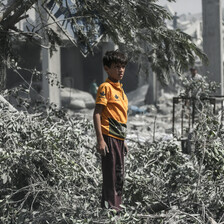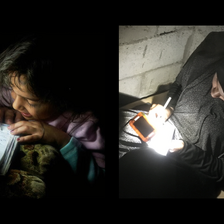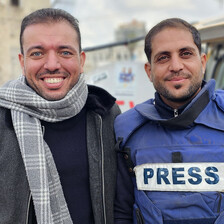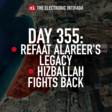The Electronic Intifada 7 February 2025
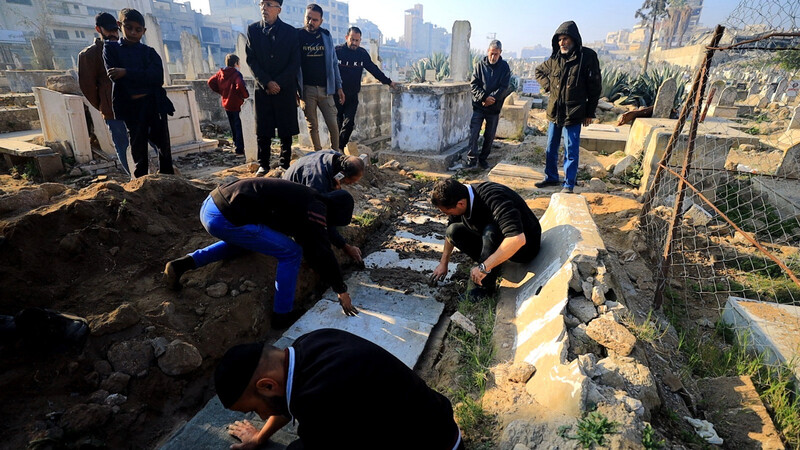
Dr. Refaat Alareer’s final resting place in Ibn Marwan Cemetery near Shujaiya, east of Gaza City, 4 February. (Image courtesy of Asem Alnabih)
When the ceasefire in Gaza began, my main focus became finding an answer to this question: Where is Dr. Refaat Alareer’s body?
I wanted to fulfill the wish of Refaat’s mother, who had told me soon before the ceasefire: “I just want to know where he is and give him a proper burial so he can rest in peace.”
The question was agonizing. The search turned out to be even more complex, harrowing and painful than I had anticipated.
I never imagined that searching for a friend’s body would become part of my daily routine for more than two weeks.
Even though I was the last known person still alive to be with Refaat in his final hours, I was unable to bury him or take part in any funeral rites.
At the time, in early December 2023 following the week-long ceasefire, Israel had cut off communications in Gaza and its bombardment was overwhelming. Most residents of Gaza City, where Refaat was killed, had already fled due to the ground invasion.
Even Refaat’s parents, wife, children and siblings had no idea where or when he was buried.
I visited the site of his assassination multiple times, hoping to piece together what had happened, but each time I was met with contradictory accounts.
Eventually, with the help of one of Refaat’s relatives, I found someone who had participated in his burial. But much of what had happened was unclear – lost to time, confusion and the extreme danger of that moment.
Uncertainty
Throughout my search, I met numerous people, combed through makeshift cemeteries and read hundreds of handwritten notes taped to hastily improvised graves – each bearing the name of a martyr, a family name, or just a date of death.
Many of these papers had faded and the writing had disappeared, making it nearly impossible to locate and identify the graves of the missing.
Refaat was buried without a funeral and without any formal rites. After extensive inquiries, it became clear that no relative or friend had been present when he was laid to rest.
Instead it transpired that Refaat was buried by neighbors from the building where he had been sheltering at the time of his assassination. His body was wrapped in fabric and placed alongside the remains of members of his family – some of whom were mere fragments, indistinguishable from one another.
Their bodies were never separated, never examined by forensic specialists, never transported to a hospital. The medical system had already collapsed and there were simply not enough medical teams to handle the overwhelming number of casualties.
One of the most shocking aspects of this ordeal was the uncertainty surrounding the number of Refaat’s relatives who were buried with him. Even within his own family, the numbers varied – some said six, others nine, some claimed eight, while others said seven.
After 15 days of searching, I am still unsure how many people were with him in that unmarked grave.
No room in Gaza’s cemeteries
It was an immense effort to locate what we believe to be Refaat’s grave. And the struggle did not end there. His family’s pain only deepened when we realized how difficult it would be to find an alternative burial site.
Gaza’s cemeteries are full. Families have been forced to open old graves to bury their loved ones or dig in the narrow spaces between existing graves, packing burial plots tightly together.
Since Refaat was buried alongside multiple relatives, finding enough graves for their reburial was even more challenging. In the end, we had no choice but to place several martyrs together in shared graves. And, heartbreakingly, they will not even be laid to rest beside one another.
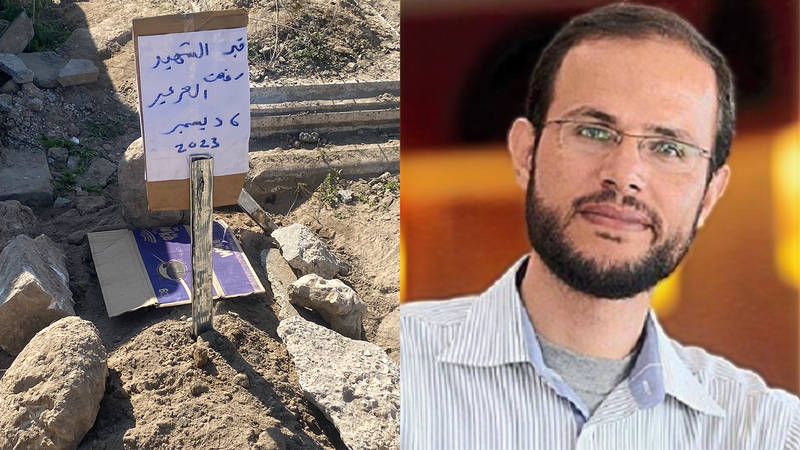
A sign marks the grave of Dr. Refaat Alareer, seen at right. (Image on left courtsey of Asem Alnabih)
After securing a new burial site, we turned our attention to the procedures required for the transfer. There was no one specialized in handling exhumations and even obtaining plastic bags was a struggle – what little we found was not enough for all the remains.
I keep thinking about what comes next. I don’t know how I will begin digging. I don’t know how we will carry the remains – most of which have likely decomposed – how we will place them in the plastic bags, and how we will transport them to their new resting place.
I have no idea how I will do any of this, but I know that I must. There is no other option.
Silent agony
Refaat’s story is not unique. Thousands of martyrs remain trapped beneath the rubble, or their graves are unknown, their fates uncertain. This tragedy will persist for years and decades, perhaps forever.
The silent agony of families searching for their loved ones is but one of the many enduring consequences of Israel’s war on Gaza. This is not just a logistical challenge; it is part of a systematic erasure of lives and identities. It is yet another aspect of genocide.
I am writing this on Monday, 3 February, just hours before transferring Dr. Refaat Alareer’s body from the makeshift grave where he was hastily buried. Tomorrow, we will carry him to his final resting place: a shared grave on the outskirts of Shujaiya, the vibrant, bustling neighborhood where he was born, lived and loved until the day he was taken from us.
I can only hope that every family in Gaza will one day have the chance to retrieve the remains of their loved ones and grant them a dignified burial. And I pray that no one, anywhere in the world, will ever have to endure this kind of unbearable and unimaginable pain.
Editors’ note: On 4 February, Dr. Refaat Alareer’s body was transferred along with the remains of his brother Salah, his sister Asma and four of his nephews to Ibn Marwan Cemetery near Shujaiya.
Asem Alnabih is an engineer and PhD researcher currently based in north Gaza. He serves as the spokesperson for the Gaza Municipality and has written for many platforms in both Arabic and English.
